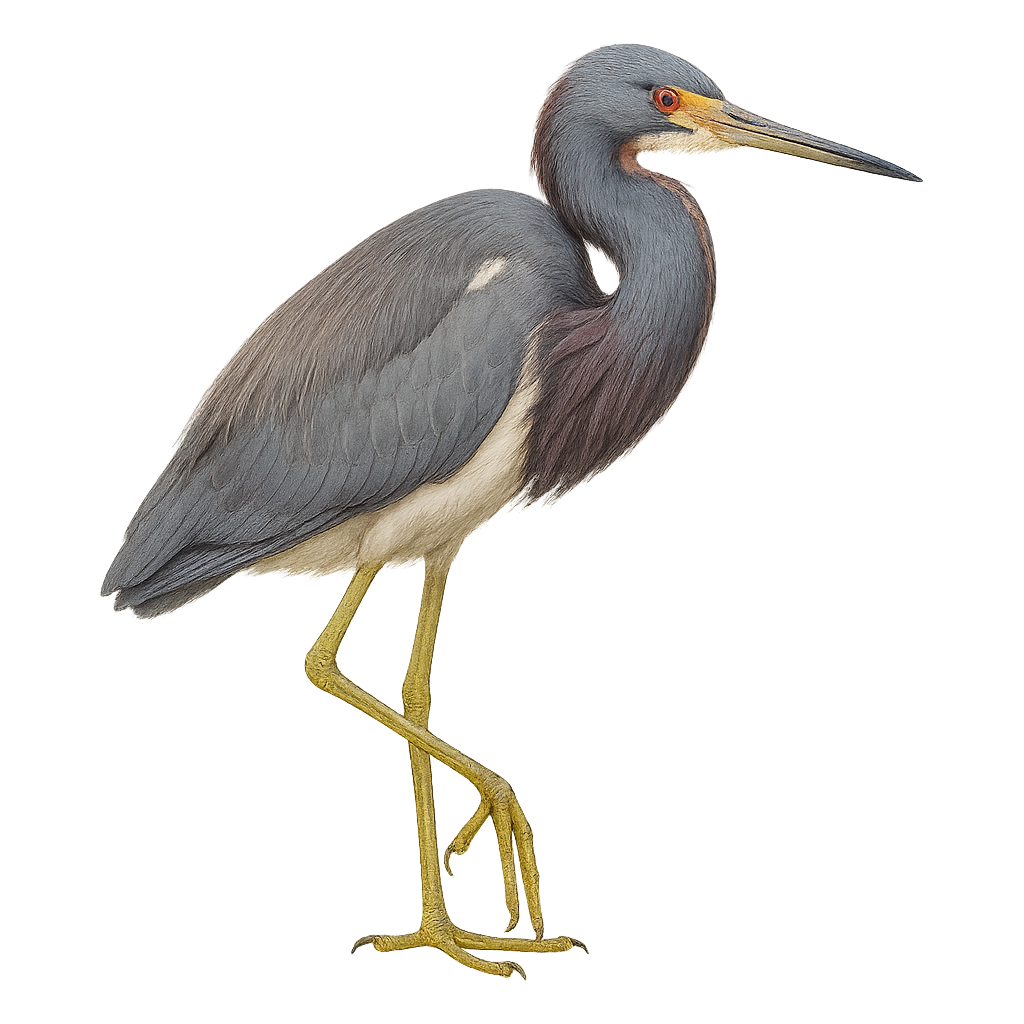Your wildlife photography guide.
Explore the tricolored heron in detail, study its behavior, prepare your shots.
Where to observe and photograph the tricolored heron in the wild
Learn where and when to spot the tricolored heron in the wild, how to identify the species based on distinctive features, and what natural environments it inhabits. The WildlifePhotographer app offers tailored photography tips that reflect the tricolored heron’s behavior, helping you capture better wildlife images. Explore the full species profile for key information including description, habitat, active periods, and approach techniques.
Tricolored Heron
Scientific name: Egretta tricolor

IUCN Status: Least Concern
Family: ARDEIDAE
Group: Birds
Sensitivity to human approach: Suspicious
Minimum approach distance: 10 m
Courtship display: March to June
Incubation: 21-24 jours
Hatchings: March to July
Habitat:
Marshes, mangroves, estuaries
Activity period :
Primarily active during the day, with peak activity in the morning and late afternoon.
Identification and description:
The Tricolored Heron, Egretta tricolor, is a graceful and slender bird, recognizable by its distinctive slate-blue, white, and brown plumage. It measures about 56 to 76 cm in length with a wingspan of 96 to 115 cm. Its long, thin bill is ideal for catching fish and crustaceans in shallow waters. It is primarily found in marshes, mangroves, and estuaries of coastal regions in North, Central, and South America. The Tricolored Heron is a gregarious bird, often seen in small groups. It is known for its active hunting technique, running and flapping its wings to scare its prey.
Recommended lens:
400mm – adjust based on distance, desired framing (portrait or habitat), and approach conditions.
Photography tips:
To photograph the Tricolored Heron, choose the golden hours of morning or evening for soft, flattering light. Use a telephoto lens of 400mm or more to capture details without disturbing the bird. Stay at least 10 m away to avoid scaring it. Be patient and observe its behavior to anticipate its movements. Marshes and mangroves provide natural backgrounds that highlight its colorful plumage.
The WildlifePhotographer App is coming soon!
Be the first to explore the best nature spots, track rutting seasons, log your observations, and observe more wildlife.
Already 1 429 wildlife lovers subscribed worldwide

